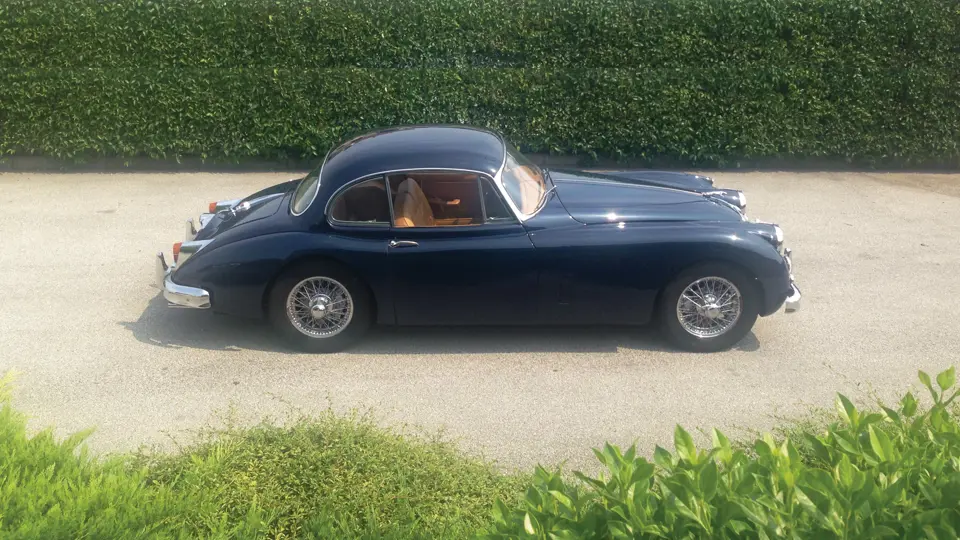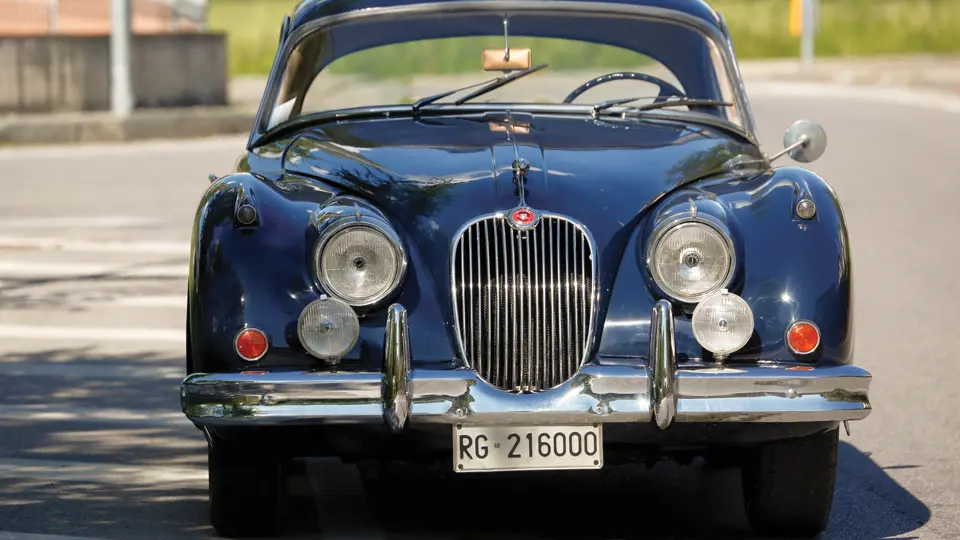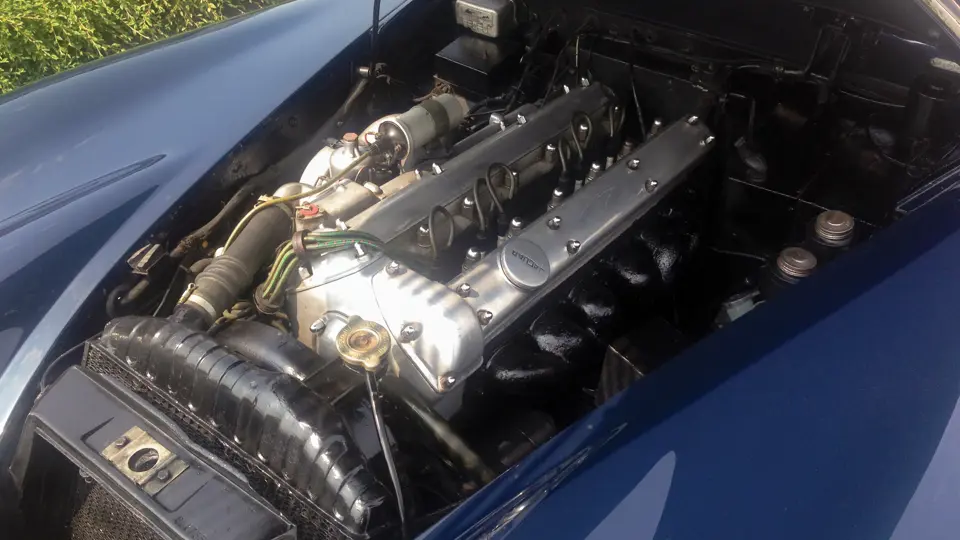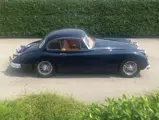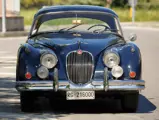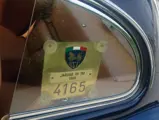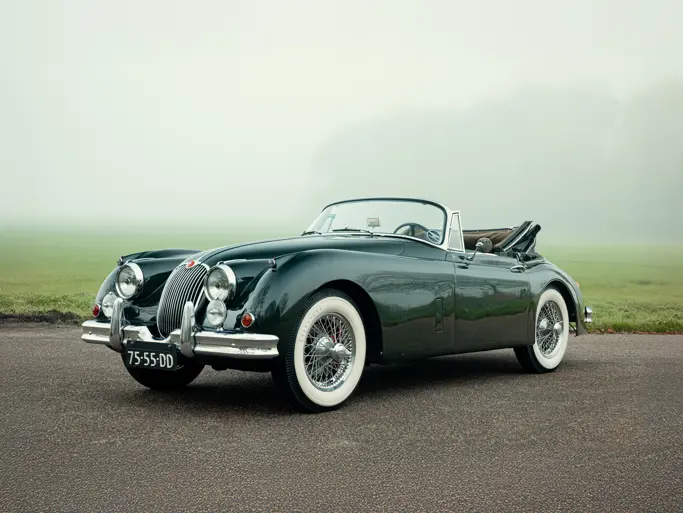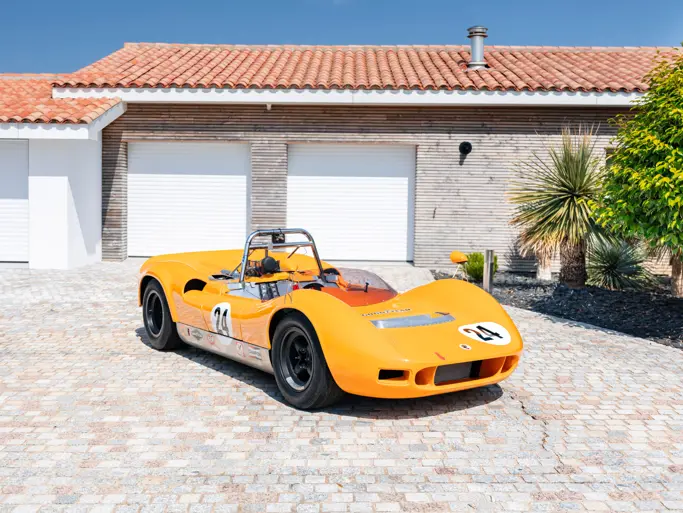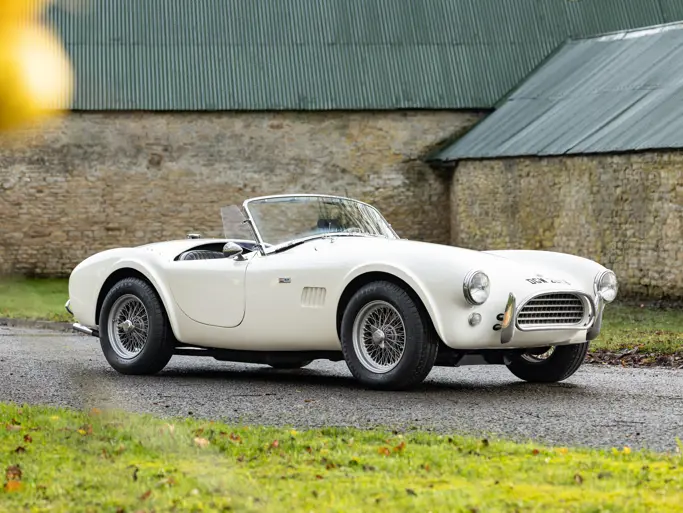180 bhp, 3,442 cc DOHC inline six-cylinder engine, four-speed manual transmission, independent front suspension with wishbones, torsion bars, and an anti-roll bar; live rear axle with semi-elliptical leaf springs; and four-wheel vacuum-assisted Dunlop disc brakes. Wheelbase: 2,590 mm
Jaguar’s new XK 150 coupé premiered alongside the drophead variant in 1957 as the last of the original XK-series cars. As the swansong of the series, the XK 150 featured upgrades and changes that engineers had adapted from both the XK 120 and 140. Many believe that the XK 150, especially the fixed head coupé, was the most liveable of the three models.
Distinguishing an XK 150 from its predecessors is simple, as the designers worked to mould the car’s body into a more conservative and subtle shape. The XK 140’s voluptuous lines were smoothed out, and Jaguar widened the car’s bonnet, enlarged the front grille, and fitted a single-piece curved windshield, which all added to its refined elegant appearance. On the inside, the door panels were made slightly thinner, which helped to increase the interior space, and a leather dashboard replaced the walnut unit that was found in its predecessors.
Mechanically, the XK 150 benefitted from the addition of four-wheel disc brakes; this was the first time that such a feature was ever fitted to a production car. In the case of the fixed head coupé, these changes certainly made for a wonderful grand touring car, as they created something that was just as exciting to look at as it was to drive over extended distances.
In fact, according to The Autocar, “The Jaguar XK 150 is undeniably one of the world’s fastest and safest cars. It is quiet and exceptionally refined mechanically, docile and comfortable . . . we do not know of any more outstanding example of value for money.” High praise indeed.
The XK 150 offered here was completed by Jaguar on 23 February 1960 and sold new through Fattori & Montani in Rome, Italy. It was originally finished in Pearl Grey over a red leather interior and fitted with a manual gearbox with overdrive. The Jaguar was subsequently loved and maintained by its previous owner for the last four decades, who is believed to have had the car restored in its current colours of blue over biscuit interior. During his ownership, the Jaguar was also given its ASI Certification Gold Plate in 1990. This well-maintained and long-enjoyed XK 150 represents a wonderful opportunity to experience one of Jaguar’s finest creations.
As many Jaguar XK 150s are either pristine concours winners or worn-down drivers, this lovely example is equally suitable for display at Jaguar owners’ club events, where its original details are sure to be a hit, as it is for simply driving on a wide-open motorway in grand comfort and style.


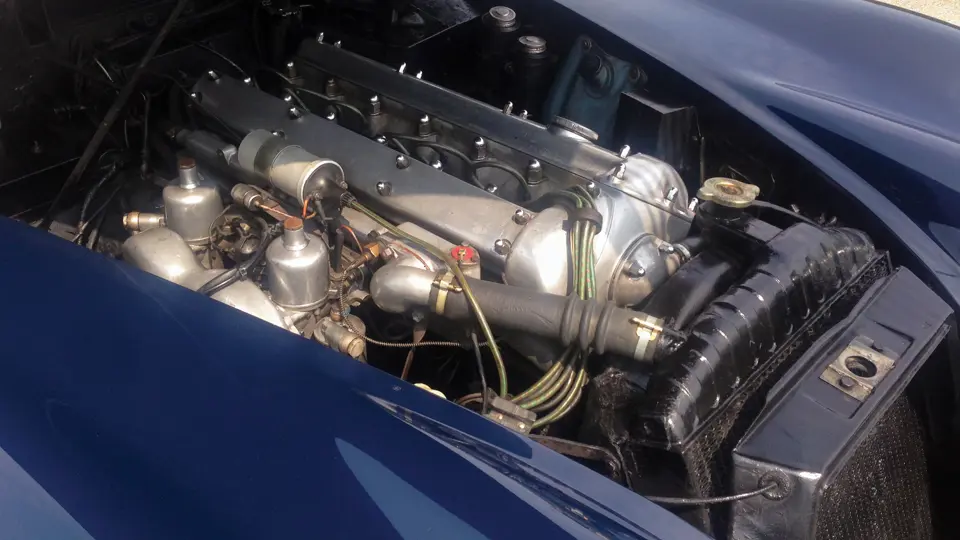

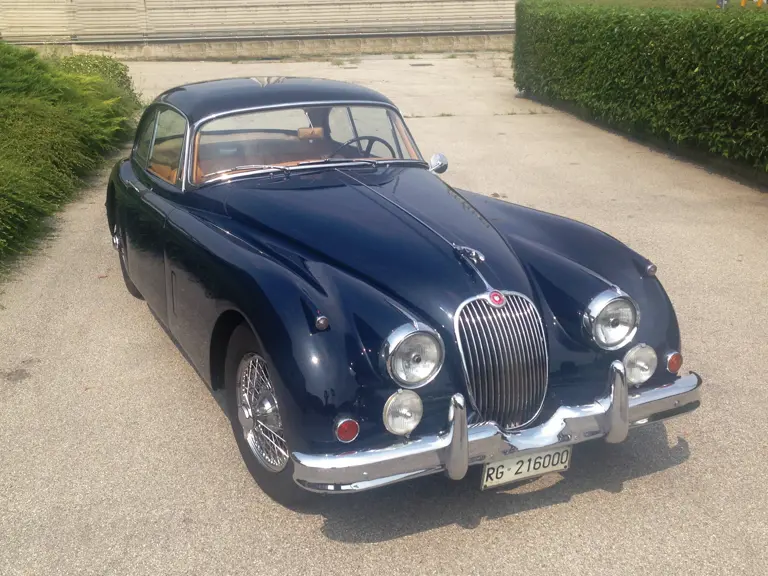
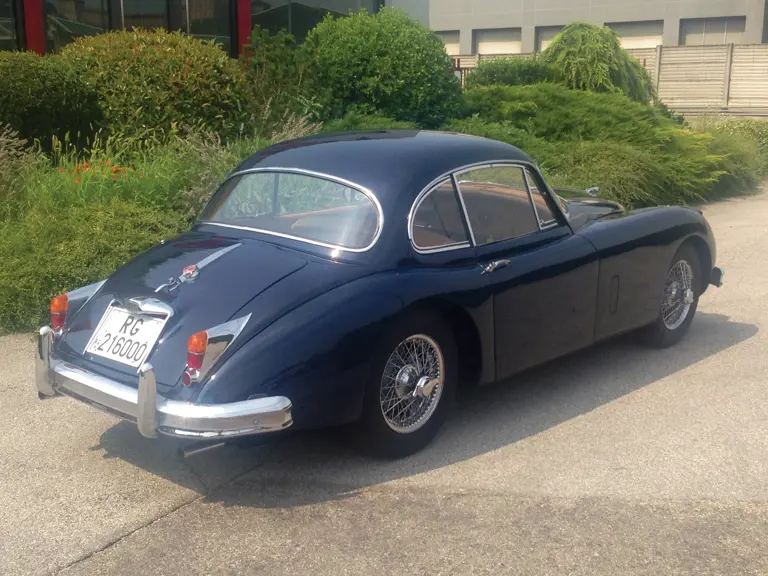
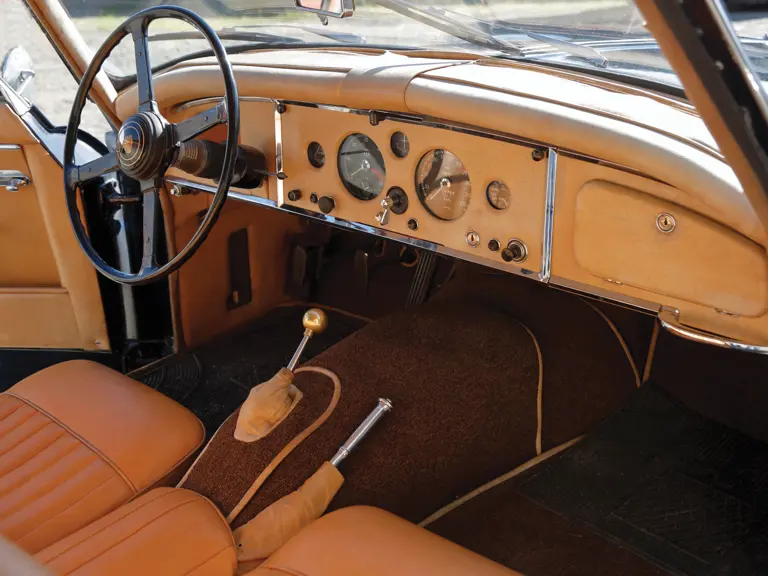
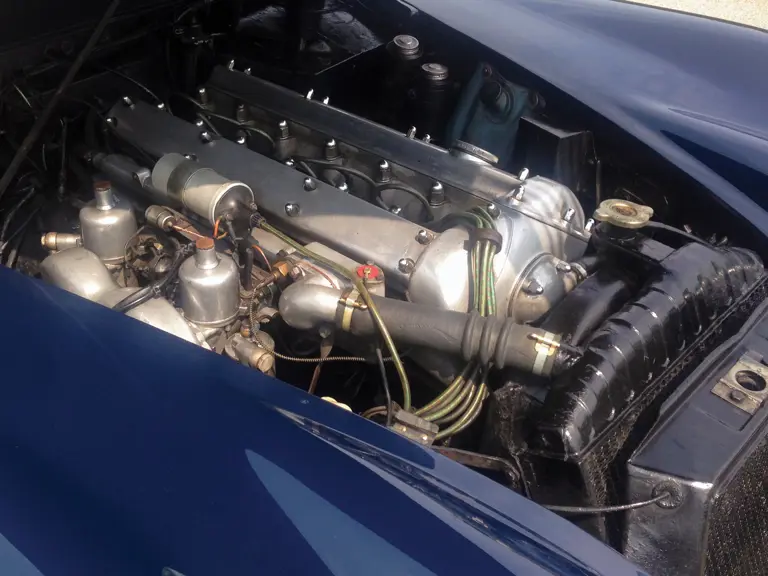
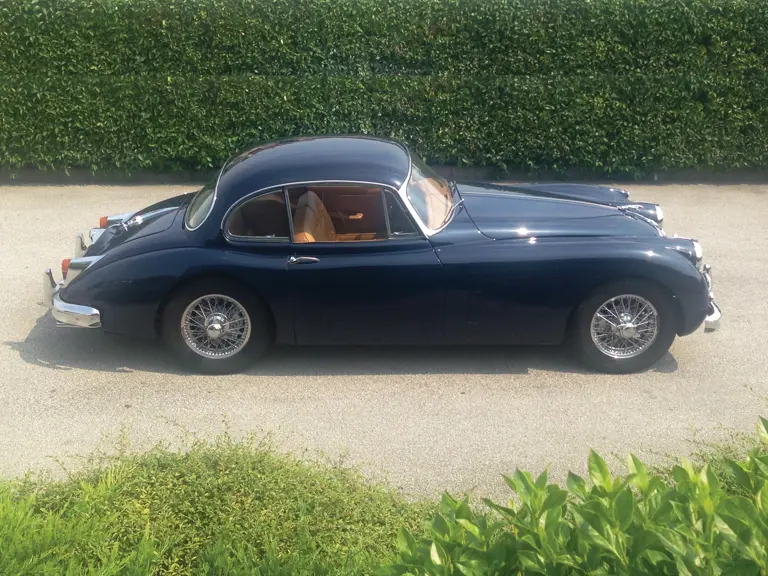
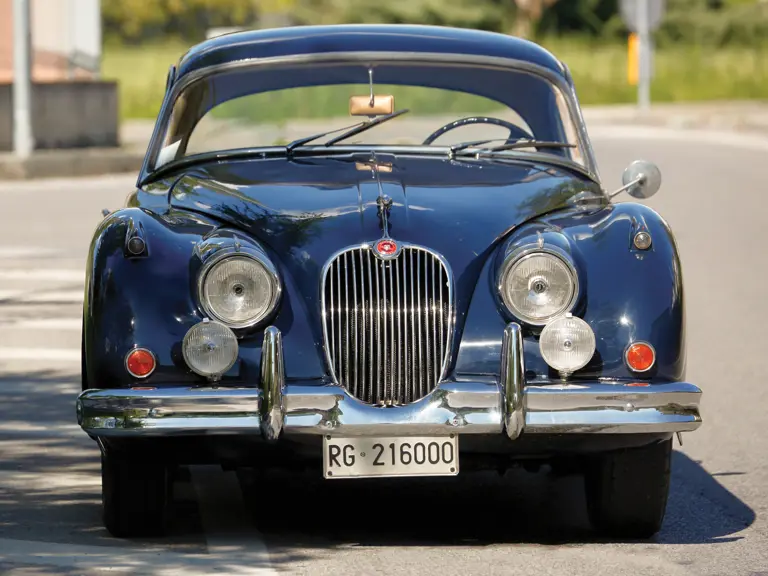
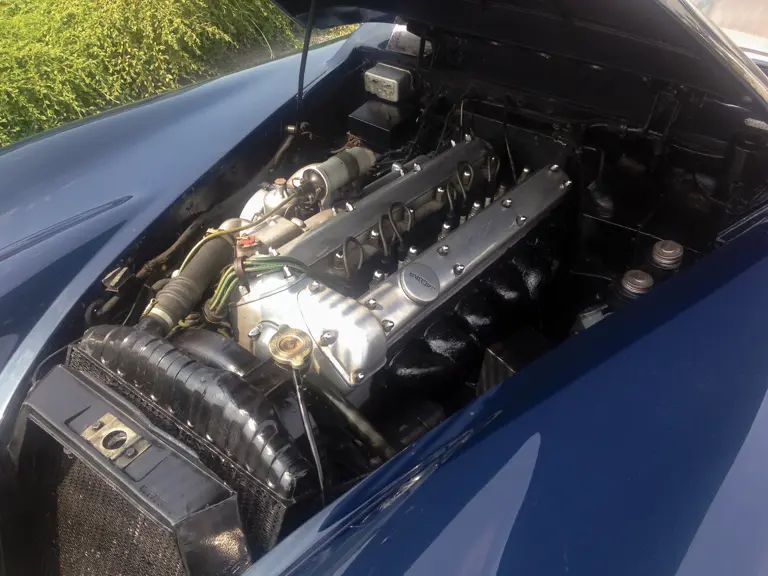
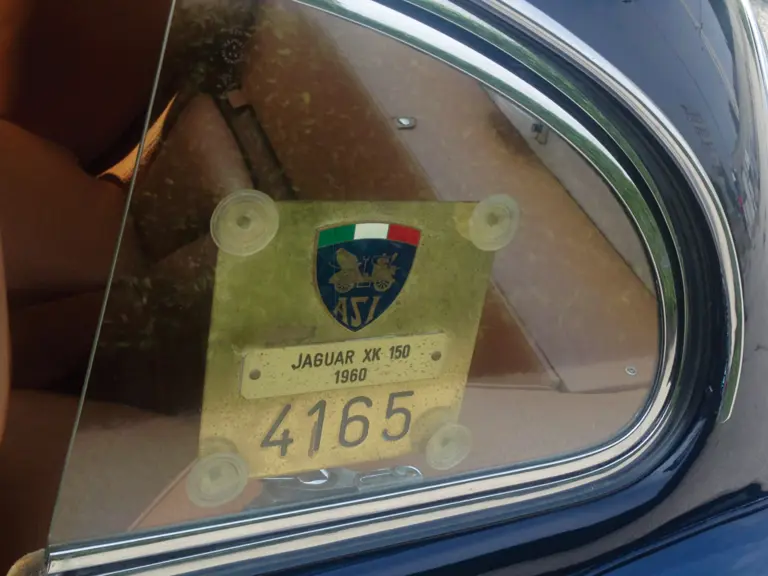
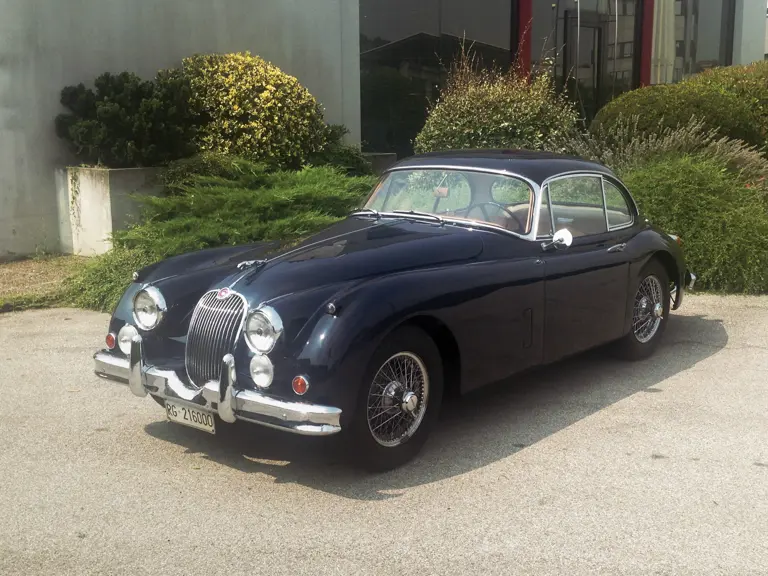
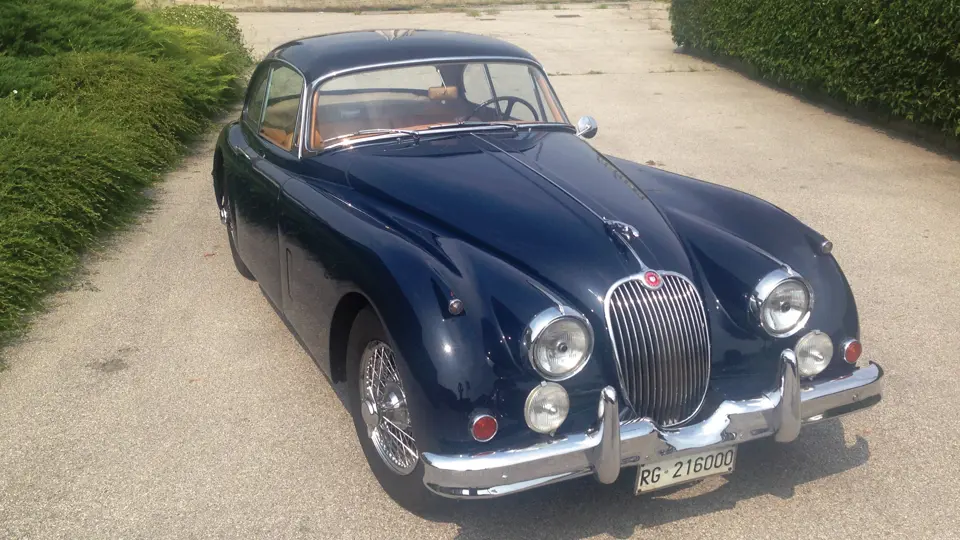
 | London, United Kingdom
| London, United Kingdom
